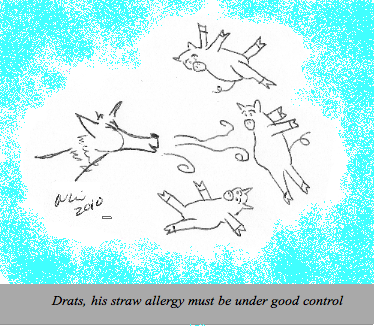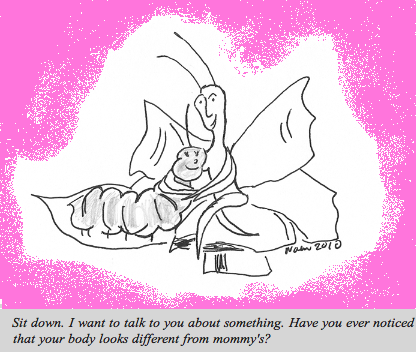Understanding Asthma, part 1
\
Last week a nurse in my office rushed a one year old girl back to one of my exam rooms. She was sitting in her mom’s lap, anxious and breathing hard. Her nostrils flared with every breath she took, and when I had her mom pull up the child’s shirt, I could see her ribs every time she inhaled because she was using extra muscles in her chest to breathe. Her belly was moving in and out as well. Her breathing had just become labored an hour before the office visit. The child had similar experiences in the past and now carries the diagnosis of asthma.
Asthma. Parents initially cringe at the diagnosis. But what is it? Most children with asthma never show up in the office with an attack as severe as the child I described above.
Asthma is a condition where the millions of airway tubes (called bronchioles) throughout the lungs get clogged with mucus (inflammation) and also get narrower (constrict) and thus become harder to breathe through. Medicine reverses the effects of asthma. Think of asthma as sensitive airways. A nasty cold virus or the billowing dust cloud from cleaning the garage makes everyone’s airway spasm. In kids with asthma, the spasm may be more severe, resulting in more cough or airway tightening.
Asthma is the most common on-going illness in children. Many babies and toddlers who have asthma have a good likelihood of outgrowing it by age three. Another subset of children, again especially below age three, have ONE episode that looks for all the world like asthma, but then they never have another episode. Other kids have asthma that stays and these kids and their families must proactively manage their asthma long term.
Asthma symptoms can start at any point, from infancy through the teen years. Adults can be diagnosed with asthma for the first time at age fifty. Dr. Lai has had symptoms of asthma since childhood but Dr. Kardos first had symptoms of asthma when she turned thirty.
The tendency to develop asthma is genetic, but there are environmental triggers in kids who carry the asthma gene. The most common triggers of asthma flares are cold viruses, cigarette smoke, and environmental allergies (animals, pollen, etc). Also, air pollution, exercise, and very strong scents (new house paint or perfume, for example) can trigger an asthma attack. It is also common for someone with asthma to have allergies and/or eczema (excessively dry, irritated skin).
How do you know your child has asthma? No one test can definitively identify asthma. Chest x-rays cannot show asthma. Sometimes Pulmonary Function Testing in older children helps doctors diagnose asthma, but younger kids often have a hard time performing the test.
Pediatricians diagnose asthma by studying the past experiences of the child. Not every child is out of breath like the patient I saw in the office. The most common symptom of asthma is cough. Watch for the following symptoms:
- Night time cough most nights of the week, usually starting somewhere after midnight. The child may or may not wake up because of the cough.
- Cough that shows up with exercise, usually after several minutes of running, swimming, jumping, even laughing.
- Cough with a common cold virus that lasts much longer than what is typical—longer than two weeks after the onset of a cold when most other kids or siblings with the same cold are better.
- Cough that is accompanied by increased work of breathing. Your child’s nostrils may flare in and out with each breath, or her ribs might stick out with each breath, or her breathing rate is much higher than baseline as if she were just running hard even when she is just resting. She might not be able to talk in complete sentences, drink, or eat because she is too short of breath.
- A wheeze— a high pitched sound heard during exhalation. The sound is not the strange, hoarse sound heard during inhalation (e.g. in a child with croup) nor is it the mucus/rumble you hear from the back of the throat of most kids with a cold.
- Cough triggered by cold: eating an ice pop or breathing cold, winter air, for example.
Don’t worry about labeling your child with the diagnosis of asthma. Gone is the stereotype of a child with asthma as a sickly kid who sits in the corner and is told not to participate in sports. A large percentage of Olympic athletes have asthma. The diagnosis of asthma will open up a world of medication and lifestyles which can soothe your child’s irritated airways.
Stay tuned for Understanding Asthma, part 2: the treatment of asthma.
Julie Kardos, MD and Naline Lai, MD
©2010 Two Peds in a Pod℠
 Panic.
Panic. 10. The sound of a six-month-old baby’s belly laugh.
10. The sound of a six-month-old baby’s belly laugh.
 You poured out all of your two liter soda bottles, replaced all the potato chip snacks with fruit and signed all your children up for winter sports. Just when you thought your family’s activity and diet balance was perfect, along comes Halloween, that fabulous candy-filled holiday to thwart your efforts. Ways to keep the candy deluge down to a trickle:
You poured out all of your two liter soda bottles, replaced all the potato chip snacks with fruit and signed all your children up for winter sports. Just when you thought your family’s activity and diet balance was perfect, along comes Halloween, that fabulous candy-filled holiday to thwart your efforts. Ways to keep the candy deluge down to a trickle: Parents can become frustrated when searching for effective therapeutic treatment for childhood anxiety. Parents want to know what works and what their child will experience. Cognitive behavioral therapy is one type of therapy for children which
Parents can become frustrated when searching for effective therapeutic treatment for childhood anxiety. Parents want to know what works and what their child will experience. Cognitive behavioral therapy is one type of therapy for children which 
 Two Peds in a Pod turns today to guest blogger Dr. Alan Woolf, Director of the
Two Peds in a Pod turns today to guest blogger Dr. Alan Woolf, Director of the  A few days ago, I spoke with the faculty of a local early childhood education center about flu vaccine myths. See how you do on the true and false quiz I gave them:
A few days ago, I spoke with the faculty of a local early childhood education center about flu vaccine myths. See how you do on the true and false quiz I gave them: